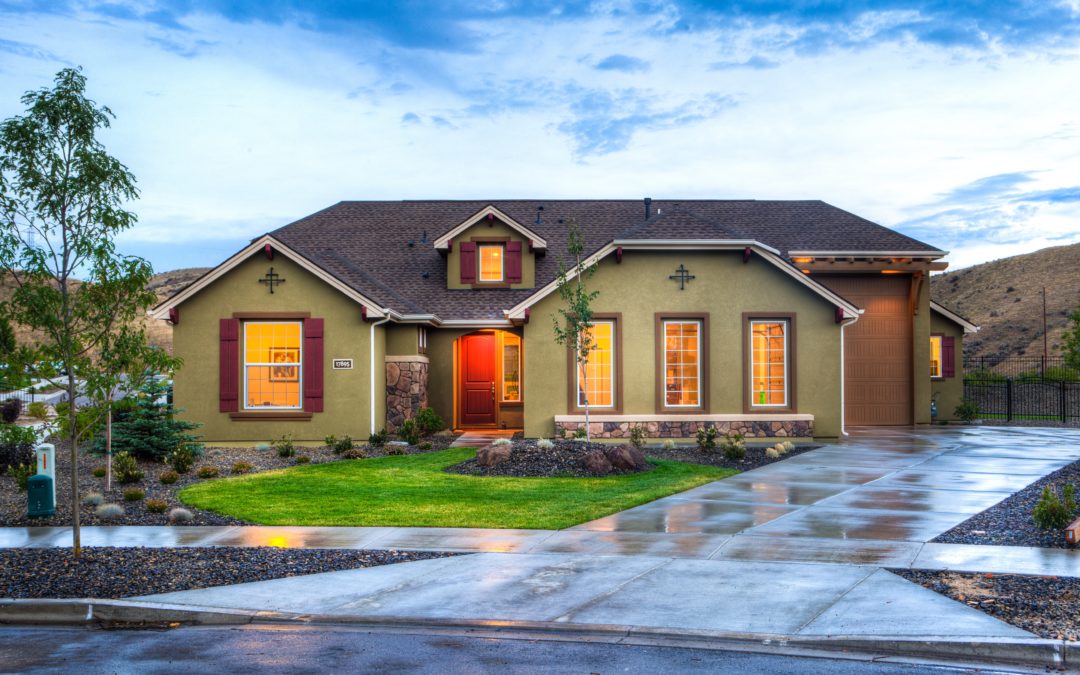An Adjustable Rate Mortgage (ARM) is a term for a mortgage that has a fluctuating interest rate each year that you hold it. This does not mean that your interest rate will always rise, it just means that it is different each year. These loans are amortized over 30 years.
There are 3 main components of an ARM that are helpful to understand: “What is the rate based on?” “How much can it adjust?” and “Is an ARM right for me?”
1. What is the Rate Based On?
Adjustable Rate Mortgages are based on two things: the index and the margin.
The index is chosen by the bank that you are doing business with. Here at Sunray, and typically for conventional loans, the index chosen is the London Interbank Offer Rate (LIBOR). This index fluctuates with the market. When the market is doing well, as we have seen in 2017-2018, you will see the index start to rise. However, when the market decreases, like we saw in 2008, the rates begin to drop again. The Index (LIBOR) is the first determining factor at your interest rate for the following year.
The margin is also determined by the bank that you choose to work with for your mortgage. This is the amount of money that the bank or investor will make on the loan over the 30 years. This is a fixed margin and will not change over the life of the loan. Typically, the margin is 2.5%.
For an example, let’s say that your rate is set to adjust next month. You look at the LIBOR and it is at 2%. You know that the margin on your loan is 2.5%, so you can calculate that your interest rate for the upcoming year will be 4.5% [Index + Margin]. For almost every ARM loan, this occurs once per year on the same month.
2. How Much Can it Adjust?
ARMs always have a period of time right after you start the mortgage where the rate is fixed and does not change based on the market. Depending on the mortgage this can be 3, 5, 7 or 10 years. After your fixed period, it begins to adjust every year after that based on the calculation above. But, what happens if we have another Great Depression during my 30-year mortgage or something unpredictable happens in the market? That is why the ARM also has something called a cap.
A cap is a max amount that your ARM can increase year-to-year and over the life of the loan. This is to help prevent “payment shock”, the risk that your future payments increase substantially and cause the you to default. Caps are broken into 3 types: Initial, Periodic and Lifetime
An initial cap is a cap that limits the amount that a mortgage rate can increase the year after your fixed period expires. Typically, that cap is 2. So, if you have a 4% rate this year, and the market increases to rates of 10%, your mortgage can only go up to 6%.
A periodic cap is a cap that limits the amount that a mortgage rate can increase in 1 year. Typically, and here at Sunray Mortgage, the cap is 2. Meaning, if you have a 4% rate this year, and the market increases to rates of 10%, your mortgage can only go up to 6% even though it should be at 10%. The next year, let’s say the market is still at 10%, your rate can then only go up to 8% and you would still be beating the markets rate.
A lifetime cap is a cap that limits the amount that a mortgage rate can increase over the life of the loan. Typically, and here at Sunray, the cap is 5. So, if your initial rate is at 4%, and your lifetime cap is 5, that means that no matter the rates in the market, your loan can never go above 9%.
When determining your options with ARM loans, be sure to speak to your lender about the caps that the loan has, for this example these would be expressed as 2/2/5 (initial/periodic/lifetime). Speak to a Sunray Mortgage professional about the rate caps and ARM options we have available.
3. Can ARMs Be the Right Option for Me?
ARMs are seen as risky to the typical buyer in today’s market. However, ARMs can be some of the best options for buyers because of the low initial rates that they offer. If you and your family are looking to purchase your first piece of real estate, the best question you can ask yourself is, how long do I plan on living here?
If your answer to that question is 7-10 years, then the ARM loan might be the best option for you. You can find an ARM loan that has a low fixed rate for 7-10 years. That way, when you start looking to upgrade your home or move into that dream house you have always wanted, you are still in the period of time where your interest rate hasn’t adjusted. You will pay much less interest over a 7-year period on an ARM than you would with the higher rate on the 30-year fixed mortgage.
Again, an ARM is a good strategy for people who do not plan on being in the home they are purchasing for more than 10 years. If you are looking at settling down in the home of your dreams and the home you will always live in, an ARM might not be a good route for you!
If you are a Texas resident or moving to Texas, we invite you to get a quick quote from a home loan expert at Sunray Mortgage. We can discuss your purchasing goals and help find an option that would be best for you.











